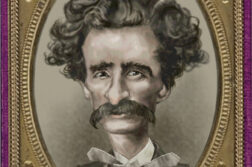Two Films and a Book
Public discussion of homosexuality in India is rare. In part, this is because sexuality in any form is rarely talked about openly. In recent years, though, attitudes toward homosexuality have changed somewhat. This is due to a rise in discussions and depictions of homosexuality by the Indian news media and Bollywood, the film industry.
In 1998, Indian-Canadian director Deepa Mehta’s lesbian-themed movie Fire was released. The film, which depicted the development of a loving sexual relationship between two Indian women, brought out an avalanche of protests and denunciations from right-wing factions. “An explosion of obscenity,” “a denigration of womanhood,” and “an attack on Hinduism” were some of the words of condemnation. Members of the right-wing organization Shiv Sena in Mumbai torched posters and broke window panes at theaters where the film was showing. But Fire received a much warmer reception from GLBT activists. In fact, the violent reaction to the film was deemed as a defining moment in the emergence of the lesbian movement in India. Hundreds of women showed up outside the ransacked theaters, holding candles and chanting. For the first time, women could be seen protesting the drastically unfair treatment they received from society in general and from men in particular.
In 2006, the issue of woman-to-woman attraction was explored by British filmmaker Pratibha Parmar in Nina’s Heavenly Delights. The film, set in Glasgow, was a light-hearted story of how a Scottish-Indian woman falls in love with her colleague while trying to win a national curry-making competition. It received praise from critics both in India and Britain, yet was ignored in India itself. Similarly, The World Unseen, a 2007 film about two Indian women who fall in love in apartheid South Africa that won twenty international awards, also never appeared in India.
Because of the taboo nature of the subject, there has been a dearth of lesbian literature in India. However, Indian author Ms. Giti Thadani achieved a sort of breakthrough in 1996 with her book, Sakhiyani: Lesbian Desire in Ancient and Modern India. “Sakhiyani” means erotic bonding between women. Among other things, the book documents how lesbian desire has been prevalent in India from ancient to modern times as revealed in literature, art, sculpture, and cosmology through the ages.
This is the crucial point that India’s modern lesbian detractors seem to have ignored. In the ancient Indian culture, homosexuality was an accepted form of sexual expression, though doubtless lesbianism was less conspicuous than gay male sexuality. Many Hindu myths and legends portrayed same-sex relations as natural and joyful. These relations, as well as gender variance, have been represented in Hinduism from Vedic times through to the present day in religious observance, law, mythical narratives, and the visual arts.
In ancient India, lesbianism was accepted and honored, though it was commonly framed as a mode of sisterhood. The phenomenon of women loving women was especially common in wealthy families, where the household’s daughter was brought up with one or more sakhis, female companions from poor families. The latter lived with the rich girl like sisters and often shared her bed. Thus intimate physical contact between them was viewed as normal and healthy.
The word “sakhi” is derived from Shakti, the female power principle, the raw energy of Tantra. “Sakhiyani” means erotic bonding among women. It was deemed emotionally nourishing, propitious, and exceptional to have a sakhi. A relationship with a sakhi reinforced the femininity of both women. Often a woman and her sakhi were inseparable; when a noblewoman married, her sakhis became co-wives and assisted in ritual love making. Such lesbian activities were looked upon as normal and are a typical feature in Indian art. In ancient India, a wealthy Indian woman used to have many female attendants, whose duties included bathing, oiling, massaging, and generally beautifying their mistress.
Polygamy was not uncommon in ancient India. In polygamous households, wives and mistresses usually lived together, often sharing the same bed. Mutual caressing was never considered perverse; it was encouraged and idealized as an expression of real caring. The Kama Sutra describes how women could use their mouths on each other’s yonis and offers ways of satisfying sexual desires by the use of bulbs, roots, and fruits having the shape of a lingam (phallus). Lesbianism was not considered sinful and was not an offense under Hindu law. In the paintings of the ancient period, women are often portrayed fondling each other intimately.
In Hindu Tantric literature, there are references to the transcendental and regenerative power inherent in sisterhoods. Loving relationships between women were endorsed and encouraged. It was understood that sisterhoods need not involve sex between women. But if sexual contact evolved spontaneously, there was a variety of ways in which women could satisfy one another. For instance, the ancient teachings emphasized the importance of kissing between women. The watery element evoked during kissing is associated with the moon, which governs womanly cycles. Similarly, oral stimulation of the mouth, yoni, and breasts as the way for women to nurture their natures was emphasized. In ancient India, a sisterly relationship was deemed to nurture real caring and generosity. Lesbianism was not viewed as just a sexual activity between women but more as a spiritual form of intimacy that could carry the partners to higher states of consciousness.
Forgetting a glorious past in which many forms of sexuality were accepted, India went on to slowly descend into sexual Puritanism and homophobia. Today, as far as personal liberties are concerned, the world’s largest democracy shows up on the list of the most backward countries. Nevertheless, activists working for the rights of lesbians say that attitudes are beginning to change among Indian lesbians in mainstream Indian society. They point out that more and more women are feeling confident enough to come out. And when they do, more are being accepted by their friends and colleagues.
Vijay Dandige, a freelance journalist and writer based in Nagpur, India (www.vijaydandige.com), is currently writing a book on the erotic wisdom of ancient India.







Discussion1 Comment
It is indeed sad that the previous generations of lesbians has done very little to bring this issue in the forefront. In my experience, there are many well educated lesbians, especially in cities like Mumbai and New Delhi who are comfortable embracing their sexuality. There is also now a match making service for Indian lesbian and Bi women (Wonderful Things Happen) http://www.wonderfulthingshappen.com So we are seeing small changes, but a lot needs to be done to create more awareness about gay women in India.